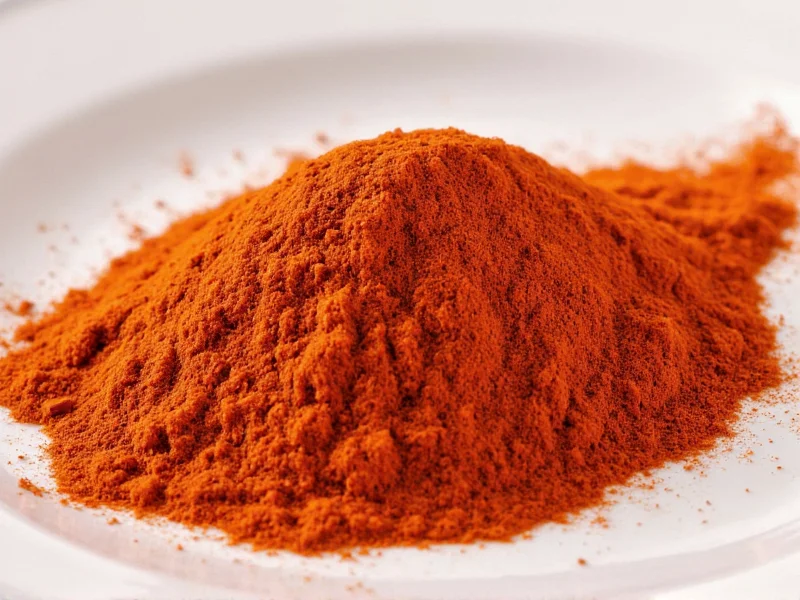When you're in the middle of cooking and realize you've run out of paprika, knowing the closest spice alternatives can save your recipe. Paprika—a ground spice made from dried sweet or hot peppers—contributes both vibrant red color and distinctive flavor to dishes. Understanding which spices can effectively replace it requires examining paprika's key characteristics: its mild sweetness, subtle earthiness, and sometimes smokiness.
Understanding Paprika Varieties and Their Profiles
Paprika isn't a single uniform spice but comes in several varieties, each requiring different substitution approaches:
- Sweet paprika - Mild, slightly sweet, vibrant red color (most common type)
- Smoked paprika (pimentón) - Adds distinctive smoky flavor (comes in sweet, bittersweet, and hot varieties)
- Hot paprika - Contains spicier pepper varieties for heat
The best substitute depends entirely on which paprika variety you need to replace and what aspect matters most for your recipe—color, mild flavor, or smokiness.
Top Substitutes for Sweet Paprika
When seeking the closest spice to regular sweet paprika, consider these options ranked by similarity:
| Substitute | Ratio to Replace 1 Tbsp Paprika | Best For | Limitations |
|---|---|---|---|
| Red bell pepper powder + pinch cayenne | 1 tbsp powder + 1/8 tsp cayenne | Color and mild flavor | Less complex flavor profile |
| Aleppo pepper | 1:1 ratio | Mild heat with similar color | Slightly fruitier, more expensive |
| Tomato powder | 1:1 ratio | Color in sauces and stews | Different flavor profile |
| Cayenne pepper (diluted) | 1/4 to 1/2 tsp per tbsp | When heat is acceptable | Significantly hotter |
Why Red Bell Pepper Powder Makes the Closest Substitute
Among all potential alternatives, a combination of red bell pepper powder with a minimal amount of cayenne most closely mimics sweet paprika's characteristics. This pairing replicates both the vibrant red color and the mild, slightly sweet flavor profile without introducing unwanted heat. Bell peppers form the base of most sweet paprika varieties, making their powdered form the foundation for accurate substitution.
When preparing this substitute, use 1 tablespoon of pure red bell pepper powder mixed with just 1/8 teaspoon of cayenne pepper. The cayenne adds the subtle complexity found in authentic paprika without overwhelming heat. This combination works exceptionally well in dishes like Hungarian goulash, deviled eggs, and roasted potato recipes where paprika's color and mild flavor are essential.
Substituting for Smoked Paprika
When your recipe specifically calls for smoked paprika (pimentón), the substitution challenge increases because you need to replicate both the pepper flavor and the distinctive smokiness. The closest spice alternatives include:
- Chipotle powder - Provides smokiness but with significantly more heat (use half the amount)
- Paprika with liquid smoke - Add 1-2 drops of liquid smoke per tablespoon of regular paprika
- Smoked sea salt with red pepper - For dishes where salt is appropriate
For authentic Spanish or Mexican dishes requiring smoked paprika, chipotle powder offers the most comparable smoky depth, though you'll need to adjust for its greater heat level. In recipes like paella or chorizo, this substitute works well when used judiciously.
Practical Substitution Guidelines for Common Dishes
Different recipes rely on paprika for different purposes, so your substitution approach should vary accordingly:
- Color-focused dishes (deviled eggs, potato salad): Prioritize color matching with red bell pepper powder
- Flavor-forward dishes (goulash, stews): Focus on flavor profile with Aleppo pepper or diluted cayenne
- Smoky dishes (bbq rubs, paella): Use chipotle powder or liquid smoke additions
- Baking applications (some spice cakes): Consider omitting if paprika plays minor role
When substituting in traditional Hungarian recipes, maintaining the sweet paprika flavor profile is crucial, while in American barbecue applications, the smoky element often matters more than precise pepper flavor.
Avoiding Common Substitution Mistakes
Many home cooks make these errors when replacing paprika:
- Using straight cayenne pepper at 1:1 ratio (creates excessive heat)
- Substituting chili powder (contains additional spices that alter flavor)
- Using paprika alternatives in dishes where paprika is the star flavor
- Not adjusting for color differences in presentation-focused dishes
Remember that no substitute perfectly replicates paprika's unique combination of color, mild sweetness, and subtle earthiness. The key is identifying which characteristic matters most for your specific recipe and selecting a substitute that prioritizes that element.
Creating Your Own Paprika Substitute Blend
For the most reliable alternative to sweet paprika, create a custom blend you can keep on hand:
- Mix 1/4 cup dried red bell pepper flakes (finely ground)
- Add 1 teaspoon garlic powder for complexity
- Include 1/2 teaspoon onion powder
- Blend with 1 teaspoon sweet Hungarian paprika if available
- Add 1/4 teaspoon cayenne for depth (optional)
Store this mixture in an airtight container away from light. This homemade alternative captures paprika's essential characteristics better than any single spice can. When using in recipes, start with 3/4 the amount of commercial paprika called for, then adjust to taste.











 浙公网安备
33010002000092号
浙公网安备
33010002000092号 浙B2-20120091-4
浙B2-20120091-4